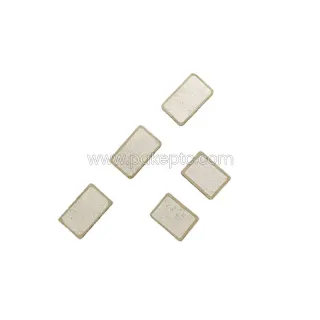What happens when a PTC is heated?
Positive Temperature Coefficient (PTC) materials exhibit a fascinating behavior when subjected to heat, and exploring this phenomenon provides insights into their applications and functionalities. Let's delve into what happens when a PTC is heated and the implications of this intriguing property.
1. Introduction to PTC Materials:
PTC Resistors: PTC materials are commonly used in the form of PTC resistors. These materials have a unique characteristic where their electrical resistance increases with rising temperature.
2. Low-Temperature State:
Initial Resistance: At lower temperatures, a PTC material has relatively low electrical resistance. This characteristic makes it conducive for applications where a low-resistance state is desired.
3. Transition Point:
Critical Temperature: As the PTC material is heated, it reaches a critical temperature known as the Curie temperature. At this point, a significant change in the material's electrical properties occurs.
4. The PTC Effect:
Rapid Resistance Increase: Beyond the Curie temperature, the electrical resistance of the PTC material experiences a sharp increase. This abrupt change in resistance is often referred to as the PTC effect or PTC transition.
5. Self-Regulating Behavior:
Temperature Stabilization: The PTC effect imparts a self-regulating behavior to PTC materials. As the resistance increases with temperature, the material becomes less conductive, leading to a natural limitation on the amount of current flowing through it.
6. Applications of PTC Heating:
Overcurrent Protection: PTC heating is harnessed in overcurrent protection devices. When a circuit experiences an abnormal increase in current (such as during a short circuit), the PTC material heats up, causing its resistance to surge and limiting the current flow, thereby protecting the circuit.
Heating Elements: PTC materials are employed in heating elements for various applications. As they heat up, their resistance rises, resulting in a self-regulating heating process that prevents overheating.
7. Benefits of PTC Heating:
Reliability: PTC heating elements offer a reliable and self-regulating method for maintaining consistent temperatures, contributing to the longevity and safety of devices.
Energy Efficiency: The inherent self-regulation of PTC materials leads to energy-efficient operation, as the heating process automatically adjusts to the required temperature.
Understanding what happens when a PTC is heated reveals the dynamic and self-regulating nature of these materials. From overcurrent protection to energy-efficient heating elements, the PTC effect is harnessed in diverse applications, showcasing its versatility and reliability in various technological and industrial contexts. The ability of PTC materials to respond to temperature changes makes them invaluable in creating efficient and safe systems across different domains.



